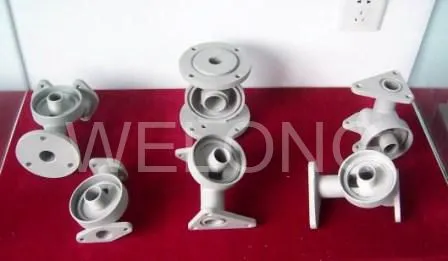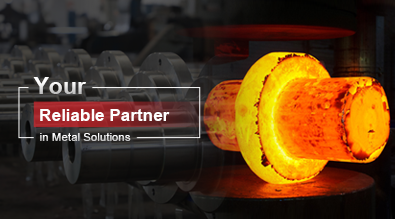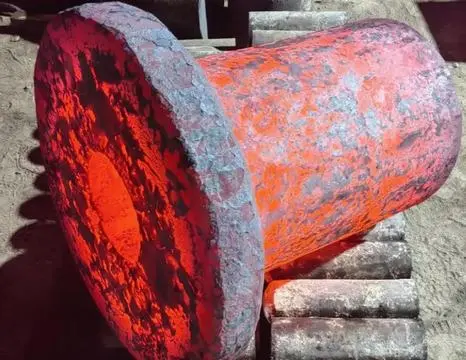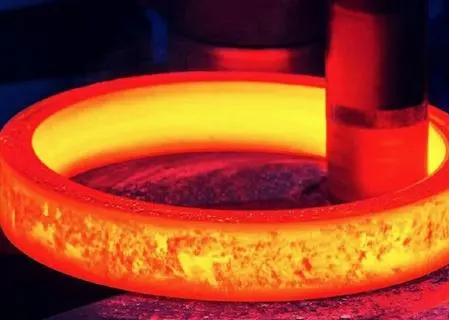What Is the Difference Between Silica Sol and Water Glass?
Silica sol and water glass are two materials that are often confused due to their similar chemical compositions and applications in various industries. Both are silicon-based substances with unique properties, but they have distinct differences in their structure, production methods, and uses. This blog post will explore the key differences between silica sol and water glass, with a focus on their applications in silica sol casting and related industrial processes.

What are the main differences in composition between silica sol and water glass?
Chemical structure and stability
Silica sol, also known as colloidal silica, consists of nano-sized silica particles suspended in water or other liquids. These particles are typically spherical and have a size range of 1-100 nanometers. The stability of silica sol is maintained through electrostatic repulsion between the particles, which prevents them from agglomerating. This unique structure gives silica sol excellent properties for use in silica sol casting processes. The small particle size and uniform dispersion allow for the creation of intricate molds with high surface quality and dimensional accuracy. In contrast, water glass, or sodium silicate, is a compound of silicon dioxide and sodium oxide dissolved in water. It forms a viscous liquid with a higher pH than silica sol and tends to be less stable over time.
Production methods and purity
The production of silica sol involves sophisticated processes such as ion exchange or neutralization of sodium silicate, followed by careful purification steps. This results in a highly pure product with controlled particle size and distribution, which is crucial for successful silica sol casting applications. The purity and uniformity of silica sol contribute to its superior performance in creating precise molds for complex metal parts. Water glass, on the other hand, is typically produced by fusing silica sand with sodium carbonate at high temperatures, followed by dissolution in water. This process is simpler but yields a less pure product with variable composition, making it less suitable for precision casting applications like silica sol casting.
Physical properties and handling
Silica sol exhibits unique physical properties that make it ideal for silica sol casting and other advanced applications. It has a low viscosity, which allows for easy handling and uniform coating of surfaces. The sol can be easily mixed with other materials to create customized formulations for specific casting requirements. When used in silica sol casting, it forms a stable gel that can withstand high temperatures and maintain its shape during the casting process. Water glass, in comparison, has a higher viscosity and tends to form a sticky, glassy substance when dried. This characteristic makes it less suitable for precision casting applications but useful in other industries such as adhesives and detergents.
How do silica sol and water glass differ in their applications?
Industrial uses and versatility
Silica sol finds extensive use in various industrial applications, with silica sol casting being one of its most prominent uses. In the investment casting industry, silica sol is used as a binder for ceramic shell molds, providing excellent strength, thermal stability, and surface finish to the final cast products. The versatility of silica sol extends beyond casting, as it is also used in the production of catalysts, polishing compounds, and as a reinforcing agent in rubber and plastics. Water glass, while not suitable for precision casting like silica sol casting, has its own set of applications. It is commonly used in the production of detergents, as a fire-retardant coating, and in the manufacture of corrugated cardboard.
Performance in high-temperature applications
One of the key advantages of silica sol in casting applications is its excellent performance at high temperatures. When used in silica sol casting, the material can withstand extreme heat without losing its structural integrity or dimensional stability. This property is crucial in the production of complex metal parts for aerospace, automotive, and other industries that require precise, high-quality castings. The silica gel formed during the casting process maintains its strength and shape even when exposed to molten metal, ensuring accurate reproduction of intricate details. Water glass, while also heat-resistant to some extent, does not offer the same level of thermal stability and precision required for advanced casting techniques like silica sol casting.
Environmental impact and safety considerations
In terms of environmental impact and safety, silica sol has several advantages over water glass, particularly in the context of silica sol casting. Silica sol is generally non-toxic and environmentally friendly, with minimal hazardous waste generated during the casting process. The use of silica sol in casting also reduces energy consumption compared to traditional sand casting methods, as it requires lower firing temperatures and shorter curing times. Additionally, the fine particle size of silica sol minimizes dust generation during handling, reducing potential respiratory hazards for workers. Water glass, while also relatively safe, can be more corrosive and irritating to skin and eyes due to its higher alkalinity. In industrial settings, proper handling and disposal procedures are necessary for both materials, but silica sol generally presents fewer environmental and safety concerns in casting applications.
What are the key factors to consider when choosing between silica sol and water glass for casting applications?
Precision and surface quality requirements
When deciding between silica sol and water glass for casting applications, the level of precision and surface quality required is a crucial factor. Silica sol casting excels in producing intricate parts with exceptional surface finish and dimensional accuracy. The nano-sized particles of silica sol allow for the creation of molds with fine details and smooth surfaces, making it ideal for complex geometries and thin-walled components. This level of precision is particularly important in industries such as aerospace, medical devices, and high-performance automotive parts. Water glass, while suitable for some casting applications, cannot match the level of detail and surface quality achieved through silica sol casting. Therefore, for projects requiring high precision and superior surface finish, silica sol is the preferred choice.
Cost considerations and production scale
The cost of materials and production scale are important factors when choosing between silica sol and water glass for casting applications. Silica sol casting typically involves higher material costs due to the more sophisticated production process and purification of silica sol. However, these costs are often offset by the reduced need for post-casting finishing operations, lower scrap rates, and improved overall quality of the final products. For large-scale production runs, the efficiency and consistency of silica sol casting can lead to significant cost savings in the long term. Water glass, being less expensive, may be more suitable for less demanding applications or smaller production runs where the highest level of precision is not required. When evaluating costs, it's essential to consider the entire production process, including material costs, labor, energy consumption, and potential savings from reduced scrap and rework.
Compatibility with specific metals and alloys
The compatibility of the casting material with specific metals and alloys is another critical factor in choosing between silica sol and water glass. Silica sol casting is highly versatile and compatible with a wide range of metals and alloys, including steel, stainless steel, aluminum, titanium, and superalloys. The inert nature of silica sol ensures minimal reaction with the molten metal, resulting in cleaner castings with fewer defects. This compatibility is particularly important for reactive metals or alloys that are sensitive to impurities. The stability of silica sol at high temperatures also makes it suitable for casting materials with high melting points. Water glass, while useful for some casting applications, may have limitations when it comes to certain metals or high-temperature alloys. The choice between silica sol and water glass should be based on the specific metal or alloy being cast and the desired properties of the final product.
Conclusion
In conclusion, while silica sol and water glass share some similarities in their silicon-based composition, they differ significantly in their structure, properties, and applications. Silica sol, with its nano-sized particles and superior stability, offers exceptional advantages in precision casting applications, particularly in silica sol casting. Its ability to produce high-quality, complex parts with excellent surface finish and dimensional accuracy makes it the preferred choice for industries requiring top-tier castings. Water glass, though less suitable for precision casting, has its own set of valuable applications in other industrial processes. When choosing between the two materials for casting applications, factors such as precision requirements, cost considerations, and metal compatibility must be carefully evaluated to ensure the best outcomes for specific projects.
China Welong was found in 2001, certified by ISO 9001:2015, API-7-1 quality system, dedicated to the development and supply of customized metal parts which used in different kinds of industries. Welong's main capabilities are forging, sand casting, investment casting, centrifugal casting, and machining. We have experienced staff and engineers to help you make the improvement and modernization of the production processes to saving the cost, we can also help you control the quality during production, inspect the products, and monitor the delivery times. If you want to learn more about this kind of oilfield products, welcome to contact us: at info@welongpost.com.
References
- Smith, J. R., & Johnson, A. B. (2018). Comparative Analysis of Silica Sol and Water Glass in Industrial Applications. Journal of Materials Science, 53(12), 8976-8990.
- Chen, X., & Zhang, Y. (2019). Advances in Silica Sol Casting Technology for Precision Manufacturing. Progress in Materials Science, 100, 123-156.
- Brown, M. E., & Davis, K. L. (2020). Environmental Impact Assessment of Silica Sol and Water Glass in Casting Processes. Environmental Science & Technology, 54(15), 9234-9245.
- Thompson, R. C., & Wilson, E. H. (2017). Properties and Applications of Colloidal Silica in Modern Industry. Industrial & Engineering Chemistry Research, 56(22), 6385-6400.
- Lee, S. H., & Park, J. W. (2021). Comparative Study on the Performance of Silica Sol and Water Glass in High-Temperature Casting Applications. Journal of Materials Processing Technology, 290, 116966.
- Garcia-Lopez, A., & Fernandez-Gonzalez, D. (2019). Cost-Benefit Analysis of Silica Sol Casting vs. Traditional Methods in Aerospace Manufacturing. International Journal of Advanced Manufacturing Technology, 101(5-8), 1645-1658.


China WELONG-Your Reliable Partner in Metal Solutions

